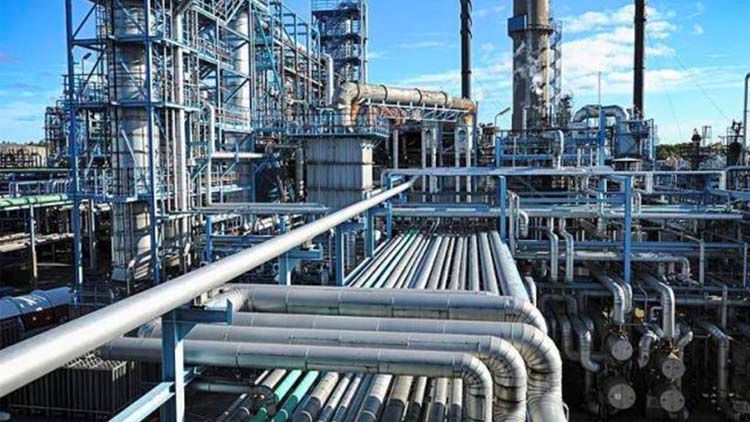This week’s economic intelligence report shows a slight global economic growth in January 2025, as the JP Morgan Global PMI rises to 50.1 points. While there was some improvements in some Key sectors, structural challenges like trade, employment, and cost pressures remain.
Regional disparities persist, with India leading industrial growth and the Eurozone struggling. Domestically, Nigeria revised its budget, facing a declining GDP per capita, and is implementing forex market stability measures amid ongoing economic challenges.
Global Economy Updates
In January 2025, the global economy saw slight growth, indicated by the JP Morgan Global PMI report rising to 50.1 points from December’s contraction. This is the first improvement in operating conditions in seven months, driven by a return to growth in global manufacturing output and new orders.
However, structural challenges persist in trade, employment, and cost pressures. Among the five key sub-indices, output, new orders, and suppliers’ delivery times improved, while employment and stocks of purchases declined. Rising demand boosted production despite regional disparities and worries over potential US tariffs.
India led global industrial growth, with the United States also having a reasonable output growth, hitting a seven-month high. China experienced a stronger expansion rate. The euro area, Japan, and the UK continued to struggle, although their contraction rates slowed.
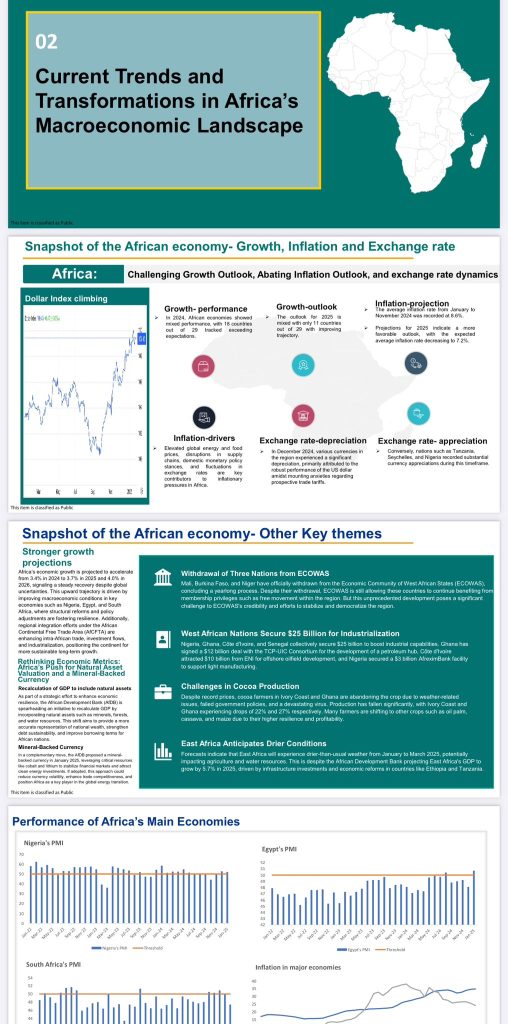
Consumer goods production surged to a seven-month high, driven by new orders, while intermediate goods production rebounded. Investment goods remained weak for the eighth consecutive month.
Global new export orders declined for the eighth month, but the pace of contraction moderated. Employment levels fell for the sixth consecutive month, with job gains in the US, Japan, and India outweighed by cuts in China, the euro area, and the UK.
The Bank of England (BoE) cut its benchmark interest rate by 25bps to 4.50% in February 2025, the third rate cut since August 2024, to stimulate economic growth amid stagflation worries. Although there was a slight dip in inflation to 2.50% in December 2024, there are still concerns about rising global oil prices and potential US tariffs.
According to Eurostat, the Eurozone’s annual consumer inflation rate rose to 2.50% in January 2025, driven by energy prices. South Africa’s PMI fell to its lowest level since July 2021, while Ghana’s inflation eased slightly in January 2025.
Domestic Economy
The Nigerian government has revised its 2025 budget upward by 9.05% to ₦54.20 trillion. The increase is driven by additional revenue from IFRS (₦1.40 trillion), the Nigeria Customs Service (₦1.20 trillion), and other government-owned agencies (₦1.80 trillion). This development could lead to accelerated fiscal activities.
Nonetheless, debt servicing has surged to ₦16 trillion, surpassing the combined allocation for security, health, education, and infrastructure – a reason to worry about fiscal sustainability. Those managing the budget should focus on the efficient use of these funds to address macroeconomic challenges.
Nigeria’s GDP per capita has seen a troubling decline, as highlighted by the latest IMF data. The GDP per capita fell to $835.49 in 2025, the lowest on record, driven by Naira depreciation and also population growth.
Over the past decade, Nigeria’s GDP per capita plummeted by 74.08%, dropping from $3,222.7 in 2014. This decline underscores the fragility of the country’s economic progress, exacerbated by macroeconomic instability, exchange rate volatility, and weak policy responses.
Without significant measures to stimulate sustainable economic growth, Nigeria risks lagging behind African and global counterparts, leaving millions vulnerable to worsening economic conditions.
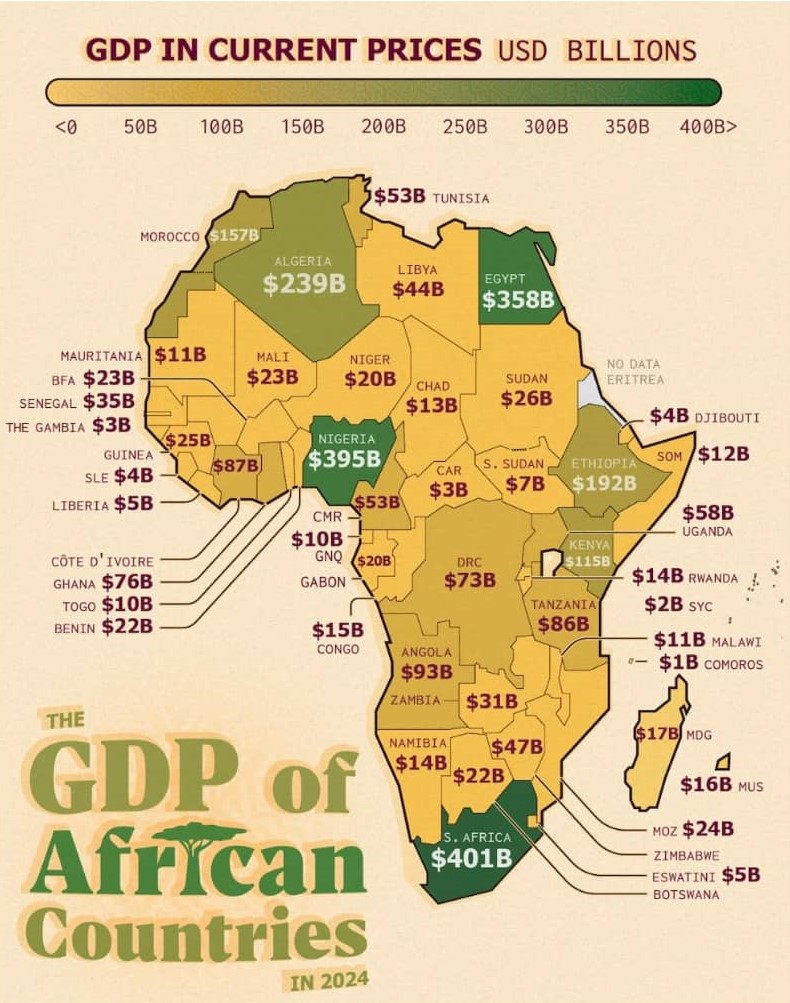
In 2025, Nigeria ranks lowest among its African peers in GDP per capita. South Africa’s stands at $6,517.1, Morocco at $4,470.6, Tunisia at $4,396.2, Egypt at $3,160.1, Ghana at $2,189.3, and Kenya at $2,186.6. This places Nigeria in the lower GDP per capita bracket of $500 to $2,500, highlighting the widening gap between Nigeria and its regional counterparts.
Globally, emerging and developing economies continue to outperform Nigeria. The IMF reports an average GDP per capita of $17,060 in 2024 for these economies, with an expected increase to $17,901 in 2025. The IMF projects Nigeria to cross the $1,000 threshold by 2028, which indicates an urgent need for structural economic reforms, improved productivity, and enhanced investment in key sectors.
Financial Market Update
This week, the Naira weakened marginally by 0.02% against the dollar, closing at ₦1501.61/$1 at the official NAFEM window. At the parallel market, it remained at ₦1575/$1.
Bonny Light crude declined by 3.44% to $76.86 per barrel, and foreign exchange reserves decreased by 0.68% to $39.45 billion.
The Central Bank of Nigeria (CBN) has introduced new guidelines to stabilize the exchange rate and meet retail demand for dollars. According to the guidelines, Bureau de Change (BDC) operators can now purchase $25,000 weekly from Authorized Dealer Banks (ADBs), up from $10,000. BDCs are allowed to source from a single dealer per week, with a 1% cap on margin sales to end users and strict reporting standards. These measures aim to enhance transparency and reduce forex market volatility.
Money Market Update
The CBN conducted a Treasury Bills Primary Market Auction (PMA) offering ₦670.00 billion across 91-day, 182-day, and 364-day tenors. The 364-day maturity saw the highest demand, with its stop rate declining by 148 basis points to 20.32%. Total subscriptions reached ₦3.22 trillion, the highest in nine years. The bid-to-cover ratio improved to 4.80x.
Strong demand underscored investors’ preference for high yields amid expectations of a more accommodative MPC stance.
The FGN Bonds secondary market continued its bullish trend, with notable yield contractions at the short and mid-end of the curve. Improved trading volumes and sustained investor confidence drove market activity.
The Eurobonds market saw a bullish tilt, with early-week strong investor demand driving yields down to 9.23%, though late-week selloffs pushed yields back to 9.31%.
Overnight NIBOR increased by 4.14 percentage points to 32.64%, driven by thinning liquidity. NIBOR for 1-month, 3-month, and 6-month maturities decreased by 26.46%, 27.45%, and 28.41%, respectively.
Equities Market Update
The Nigerian equities market has a 1.38% week-on-week increase in the NGX All-Share Index, rising to 105,933.03 points. The total market capitalization increased by 1.37% to ₦65.59 trillion. Market breadth remained positive, with strong trading activity and gains recorded across most sectors.
The NGX-Banking Index led the gainers with a 4.66% increase driven by strong financial results.
Trading activity surged, with volume and value traded increasing by 36.70% and 51.40%, respectively. UPDC emerged as the top gainer, while SUNUASSUR led the laggards.
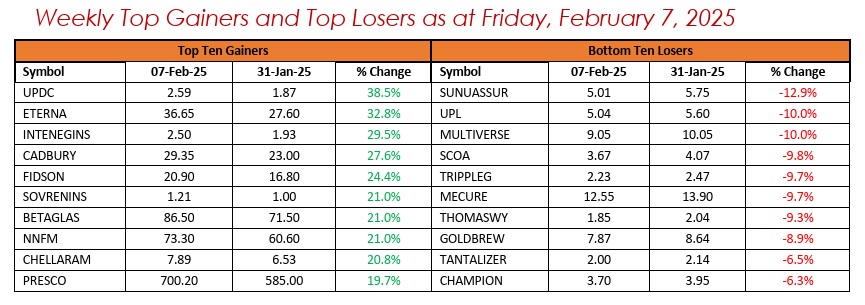
Trading activity remained strong, with gains recorded in all five sessions. Weekly trading volume and value surged by 25.84% and 82.71%, respectively, to 4.08 billion units valued at ₦126.43 billion.
The market witnessed a positive performance across five of the six tracked sectors, except for the NGX-Consumer Goods Index, which declined by 0.60% due to price depreciation in DANGSUGAR, TANTALIZER, NIGERIAN BREWERIES, and MAYBAKER.
The top-performing stocks for the week were UPDC, ETERNA, INTENEGINS, FBNH, SOVRENINS, BETAGLASS, ACCESSCORP, OKOMUOIL, PRESCO, and OANDO.
Conclusion & Forecast
Nigeria’s GDP per capita outlook remains worrisome, with economic growth lagging behind population expansion. If this trend continues, economic progress could slow, increasing poverty and reducing life quality for millions. However, the IMF projects a slight improvement: GDP per capita may rise to $940.2 in 2026, $1,001.3 by 2029, and $1,047.08 by the decade’s end.
Next week, we expect the local currency to continue gaining across FX market windows due to transparency policies.
For FGN Bonds, especially longer maturities, we expect values to fall and yields to rise. Nigerian Eurobonds will likely remain in demand due to attractive yields. Bullish momentum is expected to continue, driven by Q4 earnings reports, macroeconomic data, and upcoming economic events.
Like 👍, Comment, share this article, and Follow us on our social media handles.

